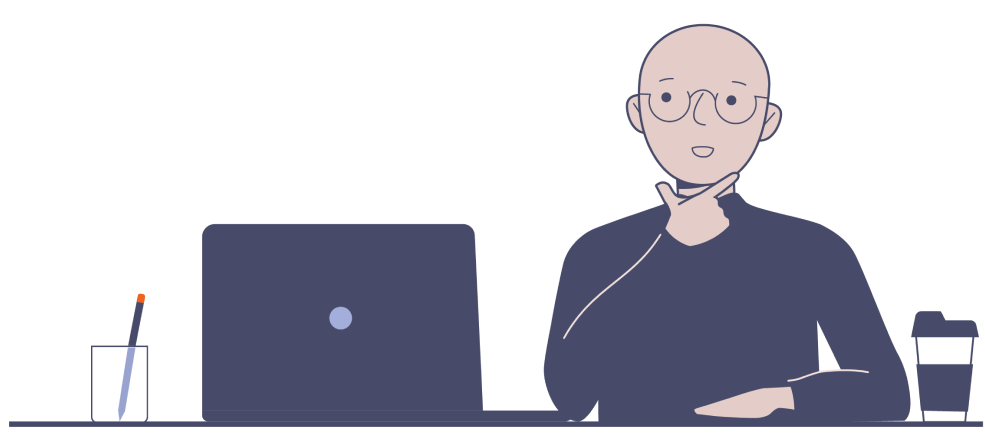
What Do We Mean When We Talk About Instructional Coaching?
Resources|19th February 2021

Co-Founder & CEO - Steplab
How can we use Instructional Coaching to transform teacher quality when we don't agree about what it is and who it's for? This series is about redefining what we talk about when we talk about Instructional Coaching.
This is the first in a blog series. The remaining parts will follow weekly.
- 1.Part 1 When we talk about Instructional Coaching, what do we mean?
- 2.
- 3.
- 4.
Part 1: When we talk about Instructional Coaching, what do we mean?
Kate has just taken on the role of Teaching and Learning Lead at her school. She's excited about improving the CPD programme; she knows that there must be a better way to train teachers than weekly all-staff inset.
Kate's spent time reading the available evidence on teacher education. A particular method of teacher education - Instructional Coaching - seems to have a very strong evidence base. For those interested, here's our overview of the fundamentals of Instructional Coaching.
As Kate reads more, she notices something: nearly everyone defines Instructional Coaching in a different way. Often this goes way beyond surface features and right to the heart of what coaches should be doing when they work with teachers. Instructional Coaching promises to generate results for teachers above and beyond other forms of teacher education, yet Kate is confused: how can she implement an effective coaching programme for her staff if she doesn't really know what it is and who it's for?
Before Kate can arrive at an Instructional Coaching model that works for her, she needs to look at the ideas that are already out there. Why do so many smart people disagree about what it means to be an instructional coach? She logs onto Twitter and finds the same thing: when we talk about coaching, we're often talking about different things.
"I agree that most formal observation systems are silly, but I don't agree that instructional coaching in itself is a sufficient replacement. It's not the right model for expert teachers for example." (Boxer, 2021)
Type-One Coaching: Directive Instructional Coaching
"The most successful leaders I've worked with give feedback in this way: they observe teachers frequently and assign them just one or two action steps per week. It feels excruciatingly slow at first...but little by little, the steps build momentum..." (Bambrick-Santoyo, 2016)
Paul Bambrick-Santoyo's books 'Get Better Faster' (2016) and 'Leverage Leadership 2.0' (2018) have had an enormous influence on the quality of teacher education in the UK. The coaching model they contain is directive, simple and can be highly effective.
It is centred around the idea that a more 'expert' coach needs to 'diagnose' the change a teacher needs to make to improve the learning of the students in the class, and direct the teacher to make this change. The coach uses modelling and deliberate practice to ensure that the teacher achieves this.
At the heart of Bambrick-Santoyo's model is the idea that coaches take the following steps when giving feedback:
- 1.See It Model the technique and analyse the 'gap' between the modelled technique and the teacher's current practice
- 2.Name it Name the strategy they want teachers to adopt using concrete, shared language (like Wait Time being short-hand for giving thinking time when you ask a question)
- 3.Do it Use deliberate practice to ensure that the teacher successfully enacts the step with their students (Bambrick-Santoyo, 2018).
Summary
- 1.The heart of this model is the action step, a specific, 'granular' change to a teacher's practice. This is influenced by the popularity of the Teach Like a Champion approach, where the 'moves' of teaching are front and center in teacher development (Lemov, 2015)
- 2.This model is directive: the coach decides, the teacher enacts
- 3.The coach then uses a set of coaching moves (See It, Name It, Do It) to take the teacher through modelling, deliberate practice and implementation planning and help ensure they enact with fidelity
- 4.The model is based on regular observation and feedback cycles between a coach and a teacher.
The Positives
As with many teacher educators across the UK, this model has a huge influence on Kate's thinking. She likes the 'immediacy' of the approach: the coach sees an issue and selects the action step that is most likely to immediately remedy it. She recognises how much impact the bite-sized approach to teacher development can have, and feels the same way about the importance the model places in modelling and deliberate practice. Picking the most important change a teacher needs to make, showing them exactly how to make it and helping them to develop strong habits must be a recipe for success.
The Negatives
Kate doesn't want to adopt a model that is only suitable for half her staff. After testing, she learns that many experienced teachers find the model overly prescriptive. As the tweet above recognises, experienced teachers don't always need to be told and shown exactly what to do. Surely, there must be a single model of instructional coaching that works just as well for her experienced teachers as it does for novices.
She decides to dig further into debate around Instructional Coaching to see if she can find a solution. Let's head back to Twitter.
"Instructional coaching is not for novice teachers. That is mentoring. Instructional coaching stems from the work of Jim Knight in Kansas, and is about a coach and teacher working together to solve a problem. This is probably more effective for expert teachers than novices." (Rodriguez-Clark, 2021).
Type-Two Coaching: Non-Directive Instructional Coaching
Coaching is "...a one-to-one conversation focused on the enhancement of learning and development through increasing self-awareness and a sense of personal responsibility, where the coach facilitates the self-directed learning of the coachee through questioning, active listening, and appropriate challenge in a supportive and encouraging climate." (Knight, 2007)
Jim Knight's (2012) Instructional Coaching model pairs the aim of training teachers to use evidence-based practices with a belief that teacher learning is best served by supporting the teacher to solve problems around their practice rather than being directive. It's important to note that Type-One Directive Instructional Coaching isn't about limiting teacher autonomy - the teacher still needs to endorse and agree with the change - but the coach does have a directive role in deciding upon and modelling this. In Non-Directive Instructional Coaching, on the other hand, the coach shouldn't be the sage on the stage but the guide on the side.
Summary
- 1.Coaching is based on observation and feedback cycles between a coach and a teacher.
- 2.Through probing questions, the coach helps to guide a teacher towards solving a classroom problem. The solution to this problem should arise from the teacher, not the coach. The coach's expertise in addressing a classroom issue is less important than the teacher developing a personal solution that works in their context. Coaching is not about providing directive solutions to classroom problems.
- 3.The coach then supports them to make a change through modelling and planning.
The Positives
Kate is persuaded by Knight's belief that - if possible - coaches should be "pulled along" by the desires and goals of the teacher. After all, every teacher - even a first-year trainee - has almost total autonomy in their own classroom; maybe this means they should have total autonomy in decisions about their own development. There's a prevalent idea that change is most likely to stick if it comes from within, although Kate has long since learned that this idea does not make for successful student learning.
The Negatives
Kate has had experience with facilitative coaching and found it frustrating at times. If she always knew how to fix the problems she faced in the classroom, she wouldn't need support from a coach in the first place. Ironically, she can find it demotivating rather than empowering; for busy teachers, a directive, expert view on what we do can be refreshing. Like many of us, Kate wished that the coach she was working with would just tell her explicitly how to to get better.
Kate has read Dan Pink's 'Drive' (2009) and is persuaded that autonomy is an important driver of behaviour. At the same time, she knows that in medical education (for example), even experienced practitioners are not given a choice in how to solve the problems patients present. A doctor doesn't problem-solve the removal of an appendix: they skillfully follow a directive procedure. Kate feels like categorically prioritising teacher problem-solving over directiveness can imply that there isn't really a right way to teach, when the research evidence seems to suggest that there is.
In line with the tweet, Kate agrees that Knight's conception of coaching certainly isn't suitable for those nearer the novice end of the spectrum. The search for a coaching model to suit everyone continues.
Type-Three Coaching: Blank- Canvas Instructional Coaching
As Kate looks into the research evidence on the significant impact of Instructional Coaching on teacher quality, she finds another definition. Matthew Kraft and David Blazar are at the center of this research, where numerous studies find large positive effects for teachers that receive coaching (Kraft, Blazar, 2017; Kraft, Blazar, Hogan, 2018; Gregory, et al, 2017; Cohen, 2020).
In their most widely cited study, Kraft and Blazar define coaching as follows:
A. Individualized Coaching sessions are one-on-one
B. Intensive Coaches and teachers interact at least every couple of weeks
C. Sustained Teachers receive coaching over an extended period of time
D. Context-specific Teachers are coached on their practices within the context of their own classroom
E. Focused Coaches work with teachers to engage in deliberate practice of specific skills.
(Kraft, Blazar & Hogan, 2018)
This model is agnostic about the approach coaches take: coaching can be individualised, intensive, sustained, contextual and focused while operating within either the Directive Instructional Coaching or the Non-Directive Instructional Coaching models discussed above. In other words, this model describes coaching by surface features (the coach and teacher meet one-on-one, on a regular basis) rather than digging into underpinning mechanisms (modelling) or philosophy (directiveness vs problem-solving).
The Positives
When Kate digs into the evidence, she's even more convinced about the importance of making coaching work. It confirms her suspicion that replacing weekly whole-staff inset with Instructional Coaching is the right move for the teachers and students in her school.
Kate likes Kraft and Blazar's model: she sees it as a blank canvas onto which coaches can paint using whatever colours they like. It doesn't dictate whether coaches should prioritise problem-solving or directiveness, nor does it dictate specific feedback mechanisms like the Directive Instructional Coaching model.
The Negatives
On the other hand, it doesn't actually help her with the question of what it is that makes good Instructional Coaching. With the exception of deliberate practice, it doesn't mention any specific coaching practices at all. Kate's not sure that just setting up a system where coaches and teachers meet regularly is going to be enough to transform teaching quality. Surely she needs to tell coaches what effective coaching looks like, rather than just setting up the system within which they'll operate.
Although all the evidence suggests that Blazar and Kraft's model works, Kate knows that to implement it effectively in her school, she'll need an answer to the question of what it is that coaches should do.
What a mess!
Kate is left with more questions than answers.
- 1.Should she prioritise teacher problem-solving according to Knight's Non-Directive model of Instructional Coaching?
- 2.Should she encourage coaches to stick rigidly to a standardised, directive protocol like 'See It, Name It, Do It' from Bambrick-Santoyo's?
- 3.Should she ignore both of these, and opt for a 'blank-canvas' model that states that as long as coaches and teachers meet regularly, teacher development will take care of itself?
We will explore Kate's way through this dilemma in Part 2.
References
Boxer, A. (2020). Tweet.
Cohen, J. Et al. (2020). 'Teacher Coaching in a Simulated Environment,' in Educational Evaluation and Policy Analysis 42(2)
Gregory, A. E. Ruzek, C. A. Hafen, A. Y. Mikami, J. P. Allen & R. C. Pianta (2017) My Teaching Partner-Secondary: A Video-Based Coaching Model, Theory Into Practice, 56:1, 38-45
Knight, J. van Nieuwerburgh, C (2012) Instructional coaching: a focus on practice, Coaching: An International Journal of Theory, Research and Practice, 5:2, 100-112.
Knight, J. Instructional Coaching: A partnership approach to improving instruction, Corwin Press, 2007
Kraft, M.A. & Blazar, D. (2017). Individualized coaching to improve teacher practice across grades and subjects: New experimental evidence. Educational Policy, 31(7), 1033-1068.
Kraft, M.A., Blazar, D., Hogan*, D. (2018). The effect of teaching coaching on instruction and achievement: A meta-analysis of the causal evidence. Review of Educational Research, 88(4), 547-588.
Pink, D. H. Drive (2011) Canongate Books, 2011.
Rodriguez-Clark, D. (2020) Tweet.
Santoyo, P.B. (2016). Get Better Faster. John Wiley & Sons.
Santoyo, P.B. (2018). Leverage Leadership 2.0. John Wiley & Sons.


